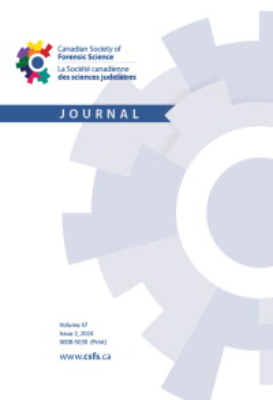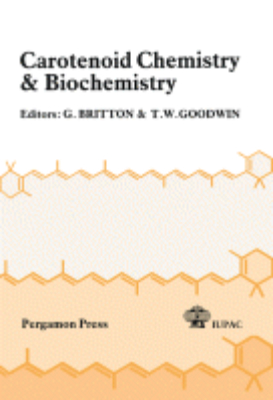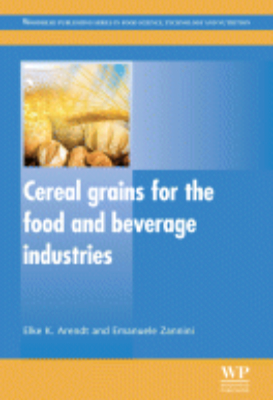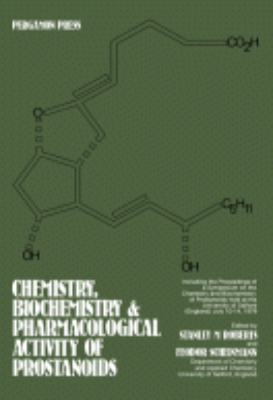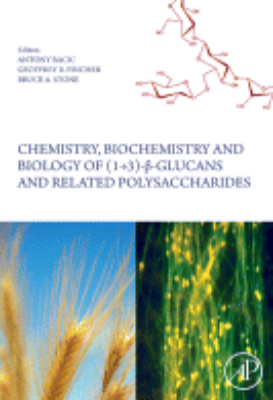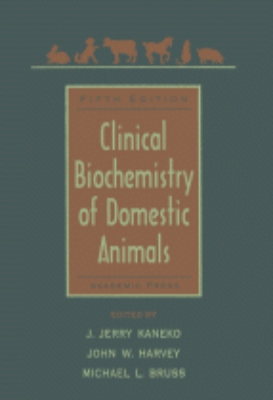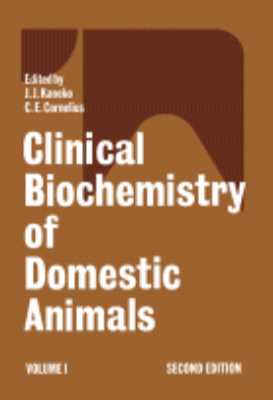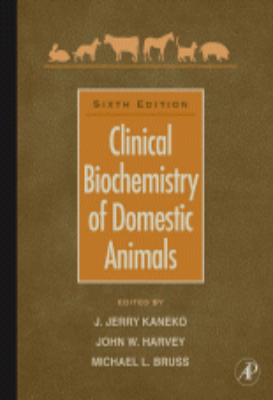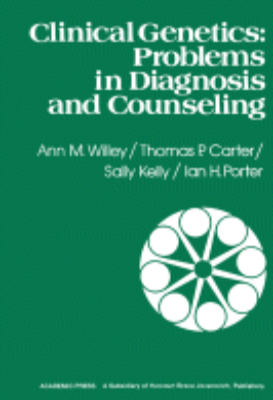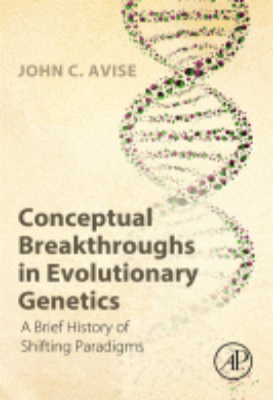Life Science
Carotenoid Chemistry and Biochemistry
Carotenoid Chemistry and Biochemistry covers the proceedings of the Sixth International Symposium on Carotenoids, held in Liverpool, United Kingdome on July 26-31, 1981. This symposium highlights the interest in biochemical and biological aspects of carotenes. This book is organized into 25 chapters including chapters on carotenoid chemistry, their structures, synthesis and physical methods, with emphasis on their stereochemistry. Other chapters deal with the chemistry of complexes between carotenoids or retinoids and protein, the novel blue carotenoproteins, and the visual pigments and the nutritionally important retinol-binding proteins. The discussions then shift to animal carotenoids, carotenoid metabolism and transformations, including interesting stereochemical findings. This book also reviews studies of carotenoids in photosynthesis, the industrial importance of carotenoids, medical aspects, particularly the use of carotenoids in treatment against skin photosensitivity and their possible role in protection against cancer. The remaining chapters examine the effects of chemicals on carotenoid biosynthesis and its relevance to herbicide design. This book will be of value to carotenoid scientists and researchers.
Cereal Grains for the Food and Beverage Industries
"Cereals are a staple of the human diet and have a significant effect on health. As a result, they are of major significance to the food industry. Cereal grains for the food and beverage industries provides a comprehensive overview of all of the important cereal and pseudo-cereal species, from their composition to their use in food products.The book reviews the major cereal species, starting with wheat and triticale before covering rye, barley and oats. It goes on to discuss other major species such as rice, maize, sorghum and millet, as well as pseudo-cereals such as buckwheat, quinoa and amaranth. Each chapter reviews grain structure, chemical composition (including carbohydrate and protein content), processing and applications in food and beverage products.Cereal grains for the food and beverage industries is an essential reference for academic researchers interested in the area of cereal grains and products. It is also an invaluable reference for professionals in the food and beverage industry working with cereal products, including ingredient manufacturers, food technologists, nutritionists, as well as policy-makers and health care professionals. Key Features. A comprehensive overview of all of the important cereal and pseudo-cereal species. Chapters review each of the following species: Wheat, Maize, Rice, Barley, Triticale, Rye, Oats, Sorghum, Millet, Teff, Buckwheat, Quinoa and Amaranth. Reviews grain structure, chemical composition, processing and applications in food and beverage products for each of the considered grains"
Chemical Plant Taxonomy
Chemical Plant Taxonomy focuses on the classification of plants based on their chemical composition. Composed of contributions of authors, the text first considers the methods of plant taxonomy. Folk taxonomy; Linnaean and post-Linnaean taxonomy; Darwin and ""Evolutionary Taxonomy""; and the development of taxonomic practice are considered. The book continues with discussions on the theoretical and practical aspects of the ""species"" concepts and an outline of the history of chemical taxonomy. The selection also looks at the qualities of chemotaxonomy, the usefulness of chemistry in plant taxonomy, biosynthetic pathways, and the factors affecting the production of secondary plant products. The text discusses the distribution of alkanes. The isolation and characterization of alkanes; taxonomic applications of alkanes; biogenesis of alkanes; and fossil alkanes are discussed. The selection highlights the chemical taxonomy of acetylenic compounds, the distribution of fatty acids in plant lipids, distribution of aliphatic polyols, cyclitols, plant glycosides, and alkaloids. The text is a good source of information for readers wanting to study the taxonomy of chemical plants.
Chemistry Biochemistry and Pharmacological Activity of Prostanoids
Chemistry, Biochemistry, and Pharmacological Activity of Prostanoids contains the proceedings of a symposium on the Chemistry and Biochemistry of Prostanoids held at the University of Salford, England on July 10-14, 1978. Separating 29 papers of the symposium as chapters, this book begins with a description of prostanoids in health and disease and recent developments in the synthesis of antisecretory prostaglandins. Other topics discuss synthesis of some novel 11-deoxyprostaglandins; bicycles, tricycles and prostaglandin synthesis; chemical and biological studies on new prostanoids; and isolation and characterization of enzymes involved in prostaglandin biosynthesis. Structure activity relationships of prostaglandins and a biochemical background of caloric restriction therapy of obesity are also explained.
Chemistry, Biochemistry, and Biology of 1-3 Beta Glucans and Related Polysaccharides
"Chemistry, Biochemistry, and Biology of 1-3 Beta Glucans and Related Polysaccharides presents a comprehensive, systematic and authoritative survey of information about a family of chemically related, but functionally diverse, naturally occurring polysaccharides--the (1-3)-glucans. International contributors describe the chemical and physicochemical properties of these glucans and their derivatives and the molecular biological and structural aspects of the enzymes involved in their formation and breakdown. A detailed analysis of their physiological roles in the various biological situations in which they are found will be provided. Additionally, evolutionary relationships among the family of these glucans will be described. Key Features. Topics of medical relevance include detailing the glucans' interactions with the immune system and research for cancer therapy applications. Web resource links allow scientists to explore additional beta glucan research. Separate indexes divided into Species and Subject for enhanced searchability"
Clinical Biochemistry of Domestic Animals: Fifth Edition 1997
This updated and expanded Fifth Edition of Clinical Biochemistry of Domestic Animals brings together in a single comprehensive volume all the pertinent information regarding the biochemistry of disease and non-disease states in animals. Clinical veterinarians and animal scientists now routinely use many of the same diagnostic and therapeutic tools used to identify and treat diseases and metabolic disorders in humans, making this book an indispensable teaching, learning, and application resource for anyone engaged in the care, health, and welfare of animals. This book concentrates on the various rationales and interpretations regarding the biochemistry of disease in animals. It includes newly updated chapters with current references and new chapters on clinical toxicology and avian clinical biochemistry. Key Features @introbul:Key Features@bul:* Brings together in a single comprehensive volume all the pertinent information regarding the biochemistry of disease and non-disease states in animals* Includes newly updated chapters with current references* Contains new chapters on clinical toxicology and avian clinical biochemistry* Concentrates on the various rationales and interpretations regarding the biochemistry of disease in animals
Clinical Biochemistry of Domestic Animals: Second Edition 1970
Clinical Biochemistry of Domestic Animals, Second Edition, Volume I, is a major revision of the first edition prompted by the marked expansion of knowledge in the clinical biochemistry of animals. In keeping with this expansion of knowledge, this edition is comprised of two volumes. Chapters on the pancreas, thyroid, and pituitary-adrenal systems have been separated and entirely rewritten. Completely new chapters on muscle metabolism, iron metabolism, blood clotting, and gastrointestinal function have been added. All the chapters of the first edition have been revised with pertinent new information, and many have been completely rewritten. This volume contains 10 chapters and opens with a discussion of carbohydrate metabolism and associated disorders. Separate chapters follow on lipid metabolism, plasma proteins, and porphyrins. Subsequent chapters deal with liver, pancreatic, and thyroid functions; the role of the pituitary and adrenal glands in health and disease; the function of calcium, inorganic phosphorus, and magnesium metabolism in health and disease; and iron metabolism.
Clinical Biochemistry of Domestic Animals: Sixth Edition 2008
The 6th edition of a well-known and much used standard text in the field. This book covers all aspects of the biochemical abnormalities caused by various diseases and how they relate to the biochemical changes in the blood, urine, cerebrospinal fluid, joint fluids, other body fluids and in cells. The purpose is to provide the fundamental bases for understanding the biochemical changes that occur in disease processes and in turn to provide the rationale for applying this understanding to the diagnosis of the disease process. A substantial appendix is provided so that the user can quickly identify the reference ranges for a large number of animal species. Key Features * An appendix is provided in the book so that the user can quickly identify the reference ranges for a large number of animal species * Explains what biochemical changes occur in disease processes and provides the rationale for applying this understanding to the diagnosis of the disease process
Clinical Biochemistry of Domestic Animals: Third Edition 1980
Clinical Biochemistry of Domestic Animals, Third Edition, represents a major revision of the previous editions. Since the publication of the first edition of ""Clinical Biochemistry of Domestic Animals,"" veterinary clinical biochemistry has enjoyed a virtual explosion of new knowledge commensurate with the increased importance of companion animals, the livestock industry, and experimental animals. This third edition brings together some of the most important areas of clinical biochemistry pertinent to these sectors. For this purpose, new chapters on the reproductive hormones and clinical enzymology have been added, in addition to a rewriting of the chapters on renal function and plasma proteins and extensive revisions of all other chapters. The volume contains 18 chapters and opens with discussions of carbohydrate and lipid metabolism and associated disorders. This is followed by separate chapters on serum proteins and the dysproteinemias; porpyhrins; clinical enzymology; liver, pancreatic, and kidney function; and the physiology and pathophysiology of body fluids. Subsequent chapters deal with pituitary, adrenal, and thyroid function; skeletal muscle function; calcium, phosphorus, magnesium, and iron metabolism; the mechanisms of homeostasis; and cerebrospinal fluid physiology.
Clinical Biochemistry: Volume 1
Clinical Biochemistry: Contemporary Theories and Techniques, Volume 1 is a collection of papers that deals with the biochemistry of aging, managerial techniques, the evaluation of kits, and autoimmune diseases. One paper discusses laboratory management for clinical chemiststhe administration of people, the application of budgets, the planning process, and the adoption of decision-making strategies. The government has also issued federal legislations such as the "Clinical Laboratory Improvement Act, 1967" and the "National Heath Planning and Resources Development Act of 1974" which are changing the way laboratories are doing business. Another paper describes areas of safety concerns specific to the environment of the laboratory that require technologies not readily available to the laboratory technician. These safety problems concern radioactivity and infectious etiologic agents. Another paper discusses criteria recommendations for kit selection in clinical laboratories, for example, the list issued by the Center for Disease Control and the standards issued by the National Committee for Clinical Laboratory Standards. Another paper explains the uses of mathematics in clinical chemistry, including the application of the Allen Correction, the Henderson-Hasselbalch Equations, empirical curve fitting, standard deviation, standard error. Other papers present guidelines in dealing with autoimmune diseases and in determining specific proteins in plasma, cerebrospinal fluid, and other biological fluids. This collection is suitable for clinic and laboratory administrators and managers, for chemical chemists, and investigators or technicians involved in laboratory work.
Clinical Biochemistry: Volume 2
Clinical Biochemistry: Contemporary Theories and Techniques, Volume 2 is a collection of papers that deals with coagulation chemistry, inborn errors of metabolism (IEM), and the biochemistry of aging. One paper explains the biochemistry and clinical importance of lipoprotein-X (LP-X) as a marker for obstructive jaundice and also as a pointer in the deficiency of lecithin-cholesterol acyltransferase (LCAT), a rare inborn error of metabolism. Another paper presents guidelines in determining radioimmunoassay that are used, for example, in identifying enzymes produced by various malignant lesions. One paper reviews the basic molecular events and interactions involved in the blood clotting process and its related systems. To determine inborn errors of metabolism, the investigator can use screening techniques, prenatal diagnosis or therapy, and laboratory procedures related to IEM. To correct errors at the gene level, transgenosis and genetic engineering use recombinant DNA research techniques involving the introduction of a foreign DNA into the host cell. Some examples of IEM are phenylketonuria and hyperphenylalaninemia without PKU. This collection can prove useful for the clinical chemists, endocrinologists, internists, medical practitioners, and investigators involved in research on biochemistry.
Clinical Biochemistry: Volume 3
Clinical Biochemistry: Contemporary Theories and Techniques, Volume 3 broadens the scope of clinical biochemistry, discussing relevant aspects of serology, microbiology, monoclonal antibody techniques, and instrumentation. This volume includes the biochemical monitoring of cancer, use of chemical and physiochemical approaches to detecting and identifying etiological agents in clinical specimens, and monoclonal antibodies in clinical investigations. The serologic methods in disease diagnosis, instrumentation in clinical chemistry, and hemoglobin analysis and hemoglobinopathies are also deliberated. This text likewise covers the conventional microbiological techniques, serology of streptococcal infections, and impact of microprocessors on clinical instrumentation. This book is a good reference for clinicians interested in theories and techniques related to clinical biochemistry.
Clinical Genetics
Clinical Genetics: Problems in Diagnosis and Counseling presents the proceedings of the Twelfth Annual New York State Health Department Birth Defects Symposium. The book provides practical information applicable to counseling situations for selected diagnoses and a summary of the limitations of diagnosis and counseling for genetic disorders. The text contains chapters devoted to the description of restriction enzyme site detection and prenatal diagnosis of hemoglobinopathy; counseling for mental retardation of unknown etiology, for idiopathic dysmorphic syndromes, and for psychiatric disorders; interpretation of prenatal cytogenetic diagnosis; preconceptual vitamin supplementation; and cystic fibrosis. Geneticists, clinicians, and physicians will find the book insightful.
Clinical Genomics
"Clinical Genomics provides an overview of the various next-generation sequencing (NGS) technologies that are currently used in clinical diagnostic laboratories. It presents key bioinformatic challenges and the solutions that must be addressed by clinical genomicists and genomic pathologists, such as specific pipelines for identification of the full range of variants that are clinically important. This book is also focused on the challenges of diagnostic interpretation of NGS results in a clinical setting. Its final sections are devoted to the emerging regulatory issues that will govern clinical use of NGS, and reimbursement paradigms that will affect the way in which laboratory professionals get paid for the testing. Key Features. Simplifies complexities of NGS technologies for rapid education of clinical genomicists and genomic pathologists towards genomic medicine paradigm. Tried and tested practice-based analysis for precision diagnosis and treatment plans. Specific pipelines and meta-analysis for full range of clinically important variants"
Comparative Biochemistry of Parasites
Comparative Biochemistry of Parasites contains the proceedings of an international symposium organized by the Janssen Research Foundation and held at Janssen Pharmaceutica in Belgium on September 1-3, 1971. The symposium reviewed progress in the understanding of the physiology and biochemistry of parasites such as protozoa and helminths. Organized into 34 chapters, this volume begins with an overview of early research on parasite biochemistry before turning to a discussion of antischistosomal drugs and their biochemical effects on parasites. The reader is then introduced to the biochemistry of carbohydrates in nematodes and cestodes; neurotransmitters in trematodes; pharmacological aspects and biochemical effects of tetramisole; the mechanism of action of berenil (Diminazene) and related compounds; and dihydrofolate reductases in parasitic protozoa and helminths. Other chapters focus on the loss of fatty acid biosynthesis in flatworms, the cytochrome system in Kinetoplastidae, oxidative phosphorylation in Moniezia mitochondria, and the role of non-heme iron in cestode respiration. Scientists, particularly physiologists and biochemists, will find this book an invaluable source of information on parasite physiology and biochemistry.
Comparative Biochemistry: Volume 1 1960
Comparative Biochemistry: A Comprehensive Treatise, Volume I: Sources of Free Energy focuses on the desire to provide a sound, critical, and provocative summary of knowledge in comparative biochemistry, including thermodynamics, biological systems, oxidation, visual systems, and aerobic and anaerobic reactions of inorganic substances. The selection first offers information on the introduction to comparative biochemistry and thermodynamics of living systems. Discussions focus on comparative point of views in biology and biochemistry, classical thermodynamics, reaction rates in chemical and biological systems, and thermodynamics of open systems. The text then ponders on comparative mechanisms for fatty acid oxidation; phosphoric acid anhydrides and other energy-rich compounds; and onium compounds and their biological significance. The publication examines phototropism and phototaxis and distribution and evolution of visual systems. Topics include phototropism in plants, analysis of phototropic reaction, nature of photoreceptors, role of auxin in phototropism of plants, visual systems of vertebrates, and habitat relations. The book also tackles aerobic and anaerobic reactions of inorganic substances and comparative biochemistry of glycolysis. The selection is a dependable source of data for readers interested in the sources of free energy.
Comparative Biochemistry: Volume 2 1960
Comparative Biochemistry: A Comprehensive Treatise, Volume II: Free Energy and Biological Function focuses on methodologies, processes, and mechanisms involved in the biological transformations of energy. Composed of contributions of various authors, the book first discusses free energy and the biosynthesis of phosphates. The thermodynamics of phosphoryl and phosphate transfer reactions; enzymatic synthesis of phosphates; and phosphoryl transfer sequences in metabolism are considered. The selection also looks at the utilization of free energy in the biosynthesis of saccharides, proteins, and peptides; ammonia metabolism; and biosynthesis of urea. The book also describes muscular contraction. The structure of myofibril; protein components of myofibril; localization of myofibrillar components; contraction of adenosine triphosphate; and adenosine triphosphatases of muscles are discussed. Other mechanisms that produce movements are also noted. The text ends with discussions on experiments on active transport, balance of electrocytes and water, mechanisms of osmoregulation, bioluminescence, and nerve conduction and electrical discharge. The book is a good source of data for readers interested in studying free energy.
Comparative Biochemistry: Volume 3 1962
Comparative Biochemistry: A Comprehensive Treatise, Volume III: Constituents of Life Part A focuses on the processes, methodologies, and mechanisms involved in the biological transformations of matter. Composed of contributions of authors, the book first gives emphasis to the comparative features of fatty acid occurrence and distribution. The formation of fatty acids and lipids in living organisms; naturally occurring fatty acids and lipids; relationship between types and distribution of fatty acids and their biological origin are considered. The text also looks at the structure and distribution of sterols, steroid metabolism of lipids, and the distribution and metabolism of phospholipids. The book focuses as well on the structure and occurrence of natural monosaccharides and oligosaccharides. The occurrence of commoner monosaccharides and oligosaccharides; the compositions, reactions, and characteristics of nucleosides, nucleotides, and nucleic acids; and chromatographic examinations of biological materials for free sugars are considered. The text also looks at the structure, metabolism, and distribution of terpenoids and quinones. The book is a vital source of information for readers wanting to study the processes, methodologies, and mechanisms involved in the biological transformation of matter.
Comparative Biochemistry: Volume 4 1962
Comparative Biochemistry: A Comprehensive Treatise, Volume IV: Constituents of Life Part B focuses on the distribution, biogenesis, and metabolism of cells and organisms. Composed of various literature, the book first looks at the optical asymmetry of metabolites. The natural occurrence of D-amino acids and L-sugars; significance of purity; optical asymmetry and protein structure; and the relationship of optical asymmetry and cancer are discussed. The text also discusses structural studies on cellulose, starch, and glycogen; biochemistry of lignin formation; structure and localization of nucleic acids; and intraspecific and interspecific variations of protein molecules. The book considers the metabolism of aromatic amino acids, structural and chemical properties of keratin-forming tissues, sclerotization, and blood coagulation. The text further discusses metamorphosis and biochemical adaptation in amphibians. The importance of intrinsic tissue sensitivity in tadpoles; comparative morphological alterations; and the increase in serum albumin and serum protein are considered. The book focuses as well on the structure, distribution, and metabolism of porphyrins, pteridines, and carotenoids. The selection is a good source of data for researchers wanting to study the distribution, biogenesis, and metabolism of cells and organisms.
Comparative Biochemistry: Volume 5 1963
Comparative Biochemistry: A Comprehensive Treatise, Volume V: Constituents of LifePart C focuses on the structure and distribution of amino acids, distribution and metabolism of inorganic nitrogen compounds, acid metabolism, and comparative biochemistry of halides. The selection first offers information on the structure and distribution of amino acids and the distribution and metabolism of inorganic nitrogen compounds. Discussions focus on proteinogenous amino acids, nonproteinogenous amino acids, general aspects of inorganic nitrogen metabolism, and distribution and metabolism of nitrate, nitrite, and molecular nitrogen, ammonia, and hydrazine. The text then tackles citric acid cycle and other cycles and comparative biochemistry of collagen. The publication examines photosynthesis and halides. Topics include transfer of energy along the photosynthetic chain, carbon dioxide reduction, photosynthesis and phosphorylation, quantum yields and the efficiency of light energy conversion, chlorine, bromine, and iodine. The selection is a dependable source of data for readers interested in the constituents of life.
Comparative Biochemistry: Volume 6 1964
Comparative Biochemistry: A Comprehensive Treatise, Volume VI: Cells and Organisms focuses on the complex composition of cells and organisms. The book opens with discussions on the biochemistry of morphogenesis. Bacterial germination and sporulation; seed germination; egg development of sea urchins; sporulation of cellular slime mold; and amphibian differentiation are described. The volume looks at the comparative aspects of metabolic control, biochemical basis of chemical needs, biochemistry of insect metamorphosis, and hormones in invertebrates. The text also highlights the presence of protein hormones in vertebrates. The differences between neurohypophyseal and melanocorticotropic hormones are identified. The book ends with discussions on the comparative biochemistry of digestive mechanisms and detoxication. Digestion in special physiological and systematic groups of vertebrates, carnivorous plants, and invertebrates; detoxication and adoption of terrestrial habitat; and the developmental aspects of detoxication are discussed. The book is a good source of data for readers wanting to explore the complex composition of organisms and cells.
Comparative Biochemistry: Volume 7 1964
Comparative Biochemistry: A Comprehensive Treatise, Volume VII: Supplementary Volume focuses on the processes, methodologies, and approaches involved in molecular biochemistry. The selection first offers information on expressions of the pentose phosphate cycle, including description, criteria for the presence of the pentose phosphate cycle, chordates, segmented worms, mollusks, echinoderms, roundworms, flatworms, algae, and higher plants. The text then ponders on chitin and mucosubstances, as well as the distribution and biochemistry of chitin, molecular structure and function of chitin, and chitin in relation to mucosubstances. The publication reviews the cellular aspects of active transport and hormones and behavior. Topics include relations between inorganic ions, sugar, amino acids, fatty acids, and bioelectric potentials; aspects of the regulation of the intracellular pool of free amino acids; hormones and permeability characteristics of living cellular membranes; and chemical nature of the structure responsible for the permeability characteristics of living membranes. The recording and measurement of behavior, role of hormones in the patterning of behavior, and hormones influencing behavior and the behavior most subject to hormonal influence and control are also discussed. The selection is a dependable source of data for readers interested in the processes, methodologies, approaches involved in biochemistry.
Conceptual Breakthroughs in Evolutionary Genetics
Conceptual Breakthroughs in Evolutionary Genetics is a pithy, lively book occupying a special nichethe conceptual history of evolutionary genetics not inhabited by any other available treatment. Written by a world-leading authority in evolutionary genetics, this work encapsulates and ranks 70 of the most significant paradigm shifts in evolutionary biology and genetics during the century-and-a-half since Darwin and Mendel. The science of evolutionary genetics is central to all of biology, but many students and other practitioners have little knowledge of its historical roots and conceptual developments. This book fills that knowledge gap in a thought-provoking and readable format. This fascinating chronological journey along the many conceptual pathways to our modern understanding of evolutionary and genetic principles is a wonderful springboard for discussions in undergraduate or graduate seminars in evolutionary biology and genetics. But more than that, anyone interested in the history and philosophy of science will find much of value between its covers.

